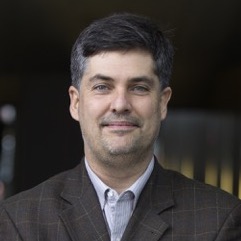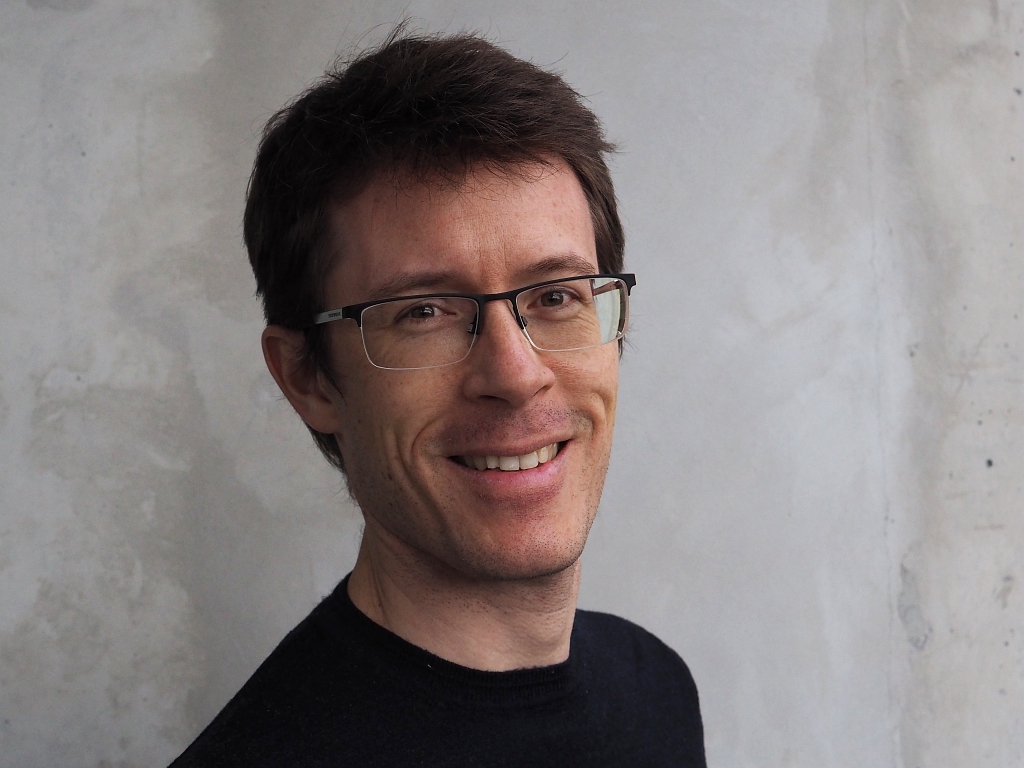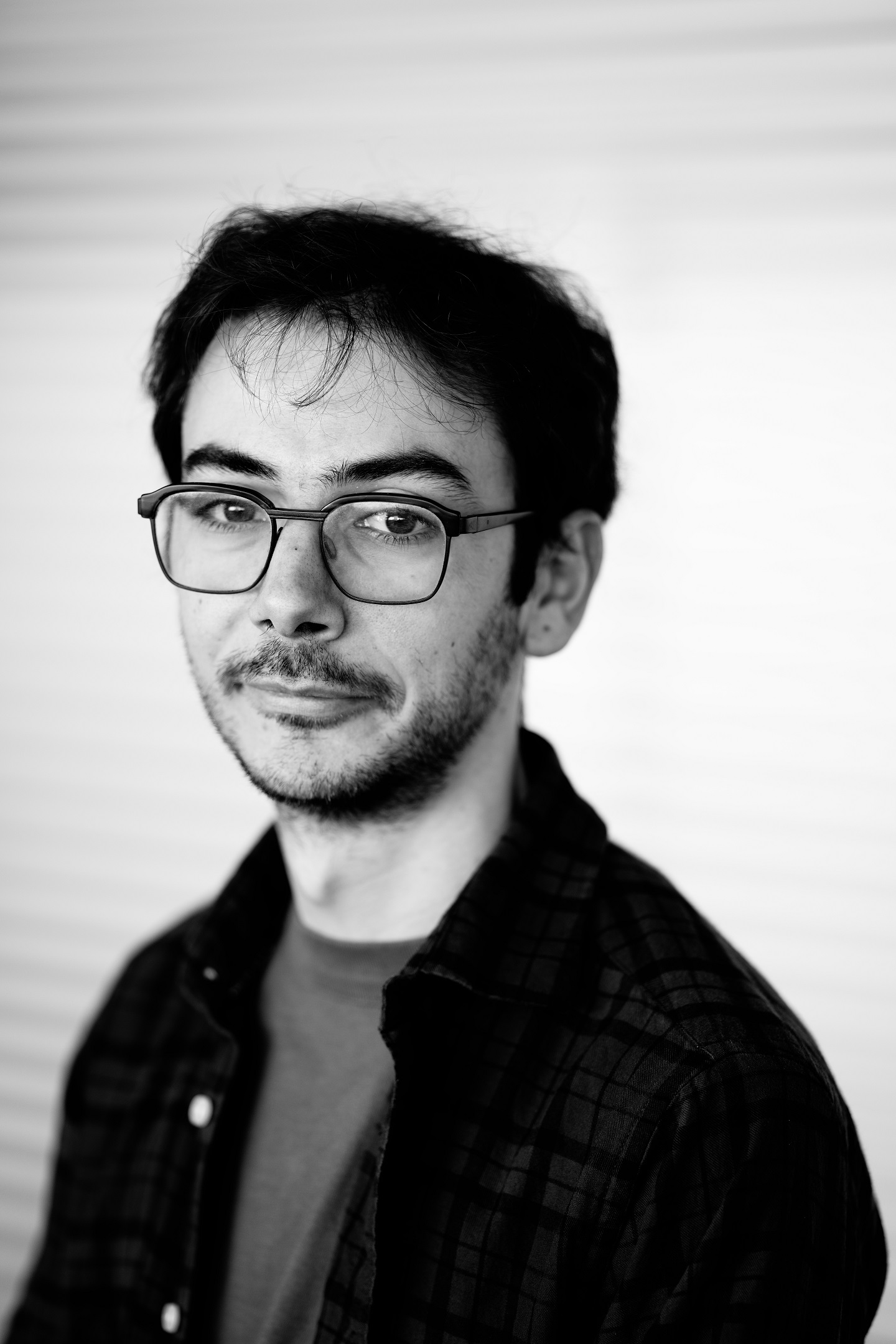Journée IHM IG RV 2024
30 - 31 Mai 2024Programme
| Jeudi 30 | Vendredi 31 | ||
|---|---|---|---|
| 13:30 - 14:00 | Bienvenue | Session présentations 2 |
8:30 - 10:00 |
| 14:00 - 15:00 | Keynote Marcelo Wanderley |
||
| 15:00 - 15:30 | Teasers posters | Pause café Posters |
10:00 - 11:00 |
| 15:30 - 16:30 | Pause café Posters |
||
| Keynote Adrien Bousseau |
11:00 - 12:00 | ||
| 16:30 - 18:00 | Session présentations 1 |
||
| Table ronde | 12:00 - 12:30 | ||
| Conclusion | 12:30 - 13:00 |
Keynotes

Marcelo M. Wanderley, professeur à McGill University
Marcelo M. Wanderley est professeur de technologie musicale à l'Université McGill, au Canada. Ses recherches portent sur la conception et l'évaluation d'instruments de musique numériques et sur l'analyse des mouvements des interprètes. Il a publié de nombreux articles sur ces sujets, ses travaux étant les plus cités au cours des deux premières décennies de la conférence NIME. Il a coédité le livre électronique “Trends in Gestural Control of Music” en 2000, coécrit le manuel “New Digital Musical Instruments : Control and Interaction Beyond the Keyboard” en 2006, et a présidé la conférence internationale de 2003 sur les nouvelles interfaces pour l'expression musicale (NIME03). Il a occupé des chaires de recherche invitées dans plusieurs institutions européennes et américaines, notamment chez Inria à Lille, à l'Université de Mons (Belgique) et à l'université fédérale de Minas Gerais (Brésil). Il est membre du comité consultatif éditorial du Computer Music Journal et membre senior de l'ACM et de l'IEEE.
Five Decades of Computer Music Interfaces
Computer music interfaces, aka musical interfaces or gestural controllers, have been a topic of interest since the beginning of academic gatherings and journals on computer music, including the International Computer Music Conference (ICMC) and the Computer Music Journal (CMJ) established in the mid-1970s. This interest builds upon previous developments in electronic music instruments, which have been proposed for over a century (Chadabe, 1997). The establishment of the International Conference on New Interfaces for Musical Expression (NIME) in 2002 has decoupled the number of academic publications in the field from a few hundred to thousands. In this talk, I will discuss the research on musical interfaces from the late 70s until today, pointing out various trends with more or less longevity that permeate the development of interfaces. Examples include works on interface design and evaluation, as well as tools to help the community navigate among the works published before and around the NIME conference.

Adrien Bousseau, directeur de recherches Inria
Adrien Bousseau est chercheur à Inria Université Côte d'Azur dans le groupe de recherche GraphDeco. Il a effectué son doctorat à l'Inria Rhône-Alpes et son postdoc à l'UC Berkeley. Il a également effectué plusieurs stages chez Adobe Research. Adrien Bousseau mène des recherches sur la création et la manipulation d'images, en particulier de dessins et de photographies. Il a notamment travaillé sur la stylisation d'images, l'édition d'images et le relighting, le graphisme vectoriel et la modélisation à base de croquis. Il a reçu l'un des trois prix de doctorat Eurographics 2011 pour ses recherches sur les manipulations expressives d'images, ainsi qu'un prix jeune chercheur de l'Agence nationale de la recherche (ANR) pour ses travaux sur le dessin assisté par ordinateur. Il a reçu une Starting Grant ERC et Proof of Concept pour travailler sur l'interprétation des dessins pour la conception 3D.
Interpreting Drawings for 3D Design - From Drawing Techniques to Algorithms
Designers draw extensively to externalize their ideas and communicate with others. But drawings are currently not directly interpretable by computers. To test their ideas against physical reality, designers have to create 3D models suitable for simulation and 3D printing. However, the visceral and approximate nature of drawing clashes with the tediousness and rigidity of 3D modeling. As a result, designers only model finalized concepts, and have no feedback on feasibility during creative exploration.
The long term goal of our group is to bring the power of 3D engineering tools to the creative phase of design by automatically estimating 3D models from drawings. However, this problem is ill-posed: a point in the drawing can lie anywhere in depth. Our originality is to exploit professional drawing techniques that designers developed to communicate shape most efficiently. Each technique provides geometric constraints that help viewers understand drawings, and that we shall leverage for 3D reconstruction.
The long term goal of our group is to bring the power of 3D engineering tools to the creative phase of design by automatically estimating 3D models from drawings. However, this problem is ill-posed: a point in the drawing can lie anywhere in depth. Our originality is to exploit professional drawing techniques that designers developed to communicate shape most efficiently. Each technique provides geometric constraints that help viewers understand drawings, and that we shall leverage for 3D reconstruction.
Sponsors

Charles Bailly, chercheur, Immersion
Immersion crée des espaces de travail immersifs et collaboratifs. Au-delà de la performance, du gain de temps et de l’efficacité de ses solutions, son ambition est de susciter la fierté chez les collaborateurs de ses clients.
Catalyseur d’innovation, expert en réalité virtuelle et augmentée, designer d’espaces et d’interfaces. Avant tout, Immersion est architecte de solutions pour orchestrer et réenchanter l’expérience de travail. Le point commun de ses solutions ? Ramener l’humain au cœur de l’innovation technologique en se focalisant sur l’expérience.
Pionnier de la réalité virtuelle depuis 1994, Immersion démontre de multiples expertises grâce à son équipe pluridisciplinaire. Immersion sélectionne, invente, brevète et distribue des produits technologiques innovants. Immersion intègre des systèmes immersifs et interactifs associant casques, grands murs d’images et tables collaboratives. Immersion développe Shariiing, sa solution logicielle tactile pour la présentation et la collaboration. Enfin, Immersion produit des applications de réalité mixte, participe à des projets de recherche nationaux et européens et réalise des études.
Quels que soient leur taille et leur secteur d’activité, acteurs privés ou publics utilisent leur espace de travail immersif et collaboratif pour des usages d’innovation, de production, de commercialisation, de formation ou de maintenance.
Pionnier de la réalité virtuelle depuis 1994, Immersion démontre de multiples expertises grâce à son équipe pluridisciplinaire. Immersion sélectionne, invente, brevète et distribue des produits technologiques innovants. Immersion intègre des systèmes immersifs et interactifs associant casques, grands murs d’images et tables collaboratives. Immersion développe Shariiing, sa solution logicielle tactile pour la présentation et la collaboration. Enfin, Immersion produit des applications de réalité mixte, participe à des projets de recherche nationaux et européens et réalise des études.
Quels que soient leur taille et leur secteur d’activité, acteurs privés ou publics utilisent leur espace de travail immersif et collaboratif pour des usages d’innovation, de production, de commercialisation, de formation ou de maintenance.
Immersion, 30 ans de recherche en XR et solutions collaboratives
Résumé: Depuis les 30 dernières années, la Réalité Étendue (Extended Reality, XR) a été la cible de nombreuses évolutions matérielles et logicielles liées à de nouvelles façons d'interagir et de nouveaux défis techniques. Nous proposons de passer en revue 30 ans de recherche en IHM et XR à Immersion. Nous nous concentrons ensuite sur les travaux en cours concernant l'interaction en Réalité Augmentée par microgestes, l'assistance à distance et la collaboration temps réelle via ShariiingXR.
Présentations orales
Session 1
Grégoire Richard, Fabien Boucaud, Catherine Pelachaud, Indira Thouvenin
Charles Javerliat, Sophie Villenave, Pierre Raimbaud, Guillaume Lavoué
Vincent Agueda, Ludovic Hamon, Sébastien George, Pierre-Jean Petitprez
Antonin Cheymol, Rebecca Fribourg, Anatole Lécuyer, Jean-Marie Normand, Ferran Argelaguet
Julien Cauquis, Etienne Peillard, Lionel Dominjon, Thierry Duval, Guillaume Moreau
Pierre-Antoine Cabaret, Thomas Howard, Guillaume Gicquel, Claudio Pacchierotti, Marie Babel, Maud Marchal
Session 2
Guillaume Klein, Jean-Rémy Chardonnet, Jérémy Plouzeau, Frédéric Merienne
Chongan Wang ; Vincent Tourre ; Thomas Leduc, Myriam Servières
Mohamed Nail Hefied, Ludovic Hamon, Sébastien George, Valériane Loison, Fabrice Pirolli, Serena Lopez, Raphaëlle Crétin-Pirolli
Mathieu Risy, Valérie Gouranton, Bruno Arnaldi
Ronan Gaugne, Sony Saint-Auret, Pierre Duc-Martin, Valérie Gouranton
Mahdiyeh Sadat Moosavi, Pierre Raimbaud, Christophe Guillet, Jeremy Plouzeau, Frederic Merienne
Posters
Matthieu Blanchard, Sophie Villenave, Bertrand Massot, Pierre Raimbaud, Guillaume Lavoué
Intissar Cherif, Amine Chellali, Mohamed Chaouki Babahenini, Cassandre Simon, Samir Otmane
Joseph Jabbour, Jalal Possik, Adriano O. Solis, Danny Kieken, Gregory Zacharewicz
Ophélie Jobert, Alix Goguey, Julien Bourgeois, Céline Coutrix